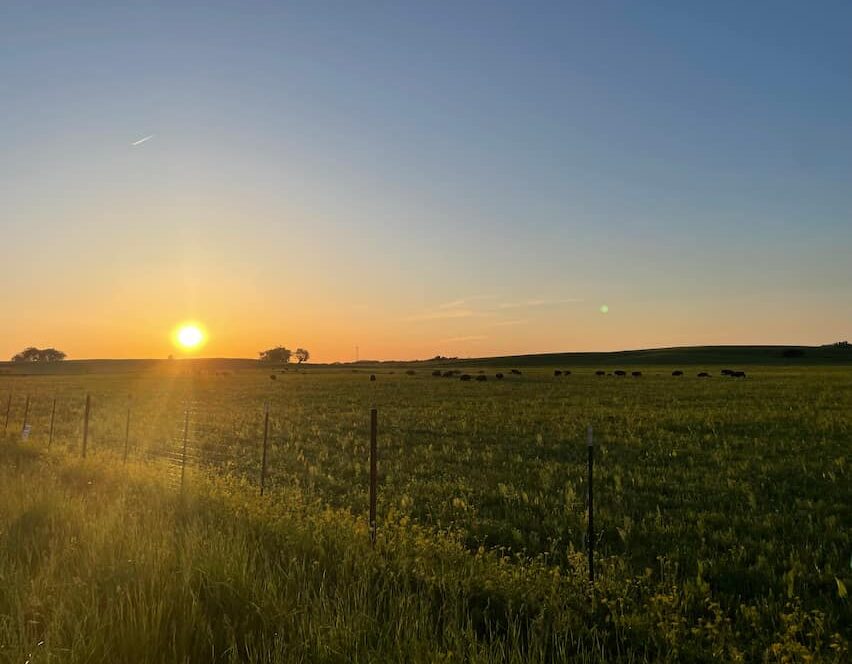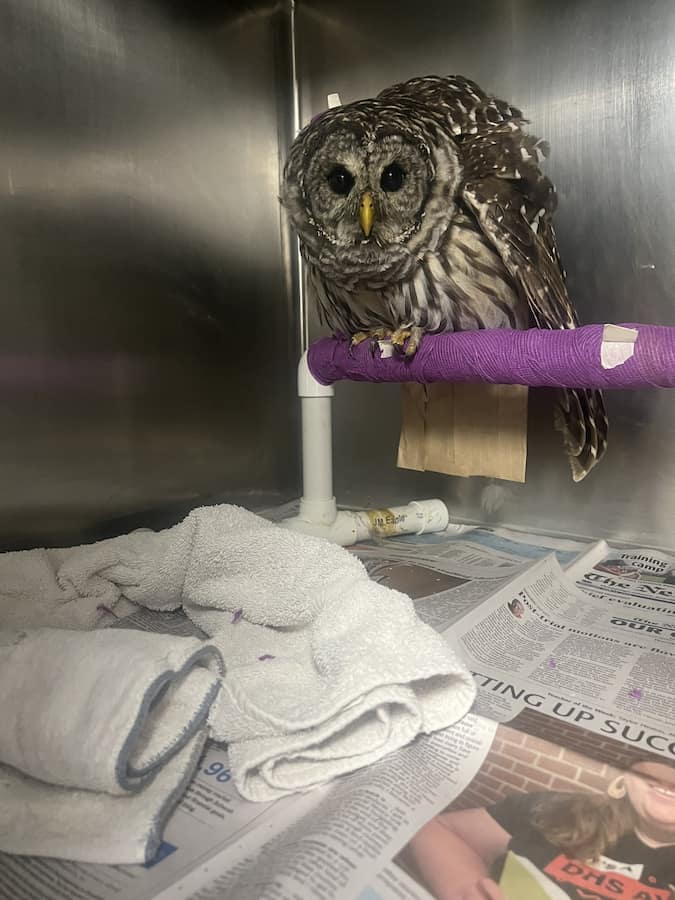There are over 40 species of snakes found in Illinois. Their habitat range includes grasslands, swamps, ponds, lakes, forests, and rivers. Illinois is home to both venomous and nonvenomous snakes. To clarify, venomous is not the same as poisonous. A venomous animal injects toxins by biting or stinging their prey, while poisonous animals refer to animals that are toxic when eaten. While the mere idea of a snake can strike fear in many, snakes serve a vital role in their ecosystem, serving as both a sentinel of ecosystem health and helping to maintain a balance in the natural world. They have also evolved some impressive and unique adaptations which set them apart from other reptile species! Check out this review of several snake species found throughout our state. You can learn more about these and other species through the Illinois Department of Natural Resources Wild About Snakes page.
Two of the four venomous snakes found in Illinois include:
- Eastern Massasauga occur throughout the northern two-thirds of Illinois. While massasaugas are endangered in Illinois due to habitat loss and fragmentation, recent studies have shown they maintain an impeccable amount of genetic diversity within populations.
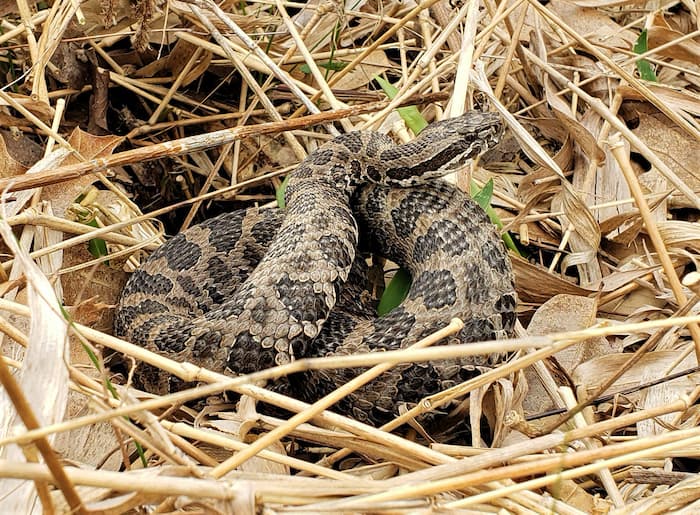
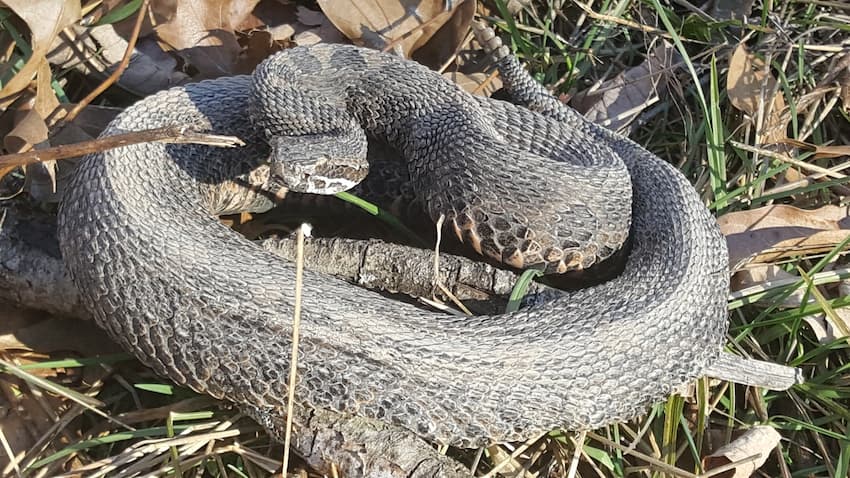
- Timber rattlesnakes, also referred to as the American viper, typically range from 2.5 – 5 feet in length. In Illinois, they are found in the counties bordering the Mississippi River as well as throughout the southern third of the state. Rattlesnakes in general are ovoviviparous, meaning the egg incubated and hatched inside the mother. The mother will then give birth to live offspring. This reproductive strategy therefore is a combination of egg laying and life birth. In rattlesnakes, incubation and birth generally takes around 90 days.
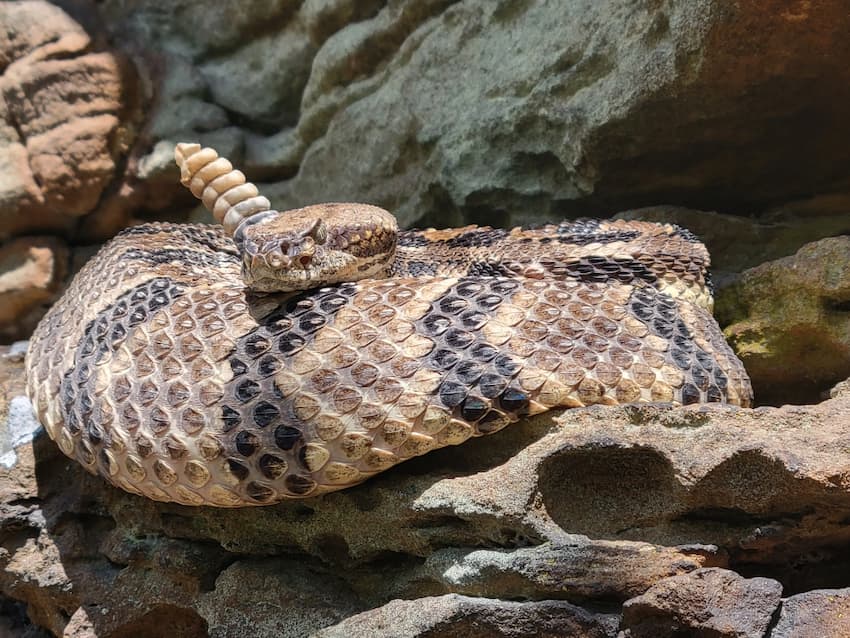
Non-venomous snakes of Illinois:
- Garter snakes, also called the grass snake, are arguably the most commonly seen snake in Illinois. Although there are over 35 species of garter snakes scattered throughout North America, Illinois is home to the common garter snake and the plains garter snake. Like their venomous counterparts, garter snakes are ovoviviparous and a single female can birth up to 80 young each season! Despite this similarity, garter snakes do not pose a threat to humans. On the contrary, this species serves an important part of the food web, consuming primarily fish, amphibians, small birds, and invertebrates while also being on the menu for a wide variety of animals themselves.
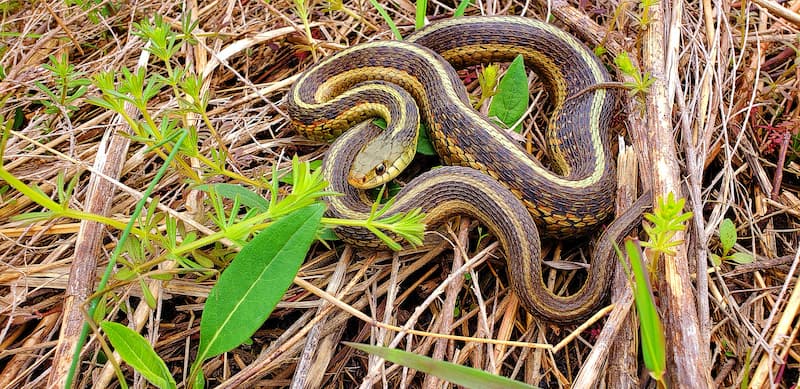
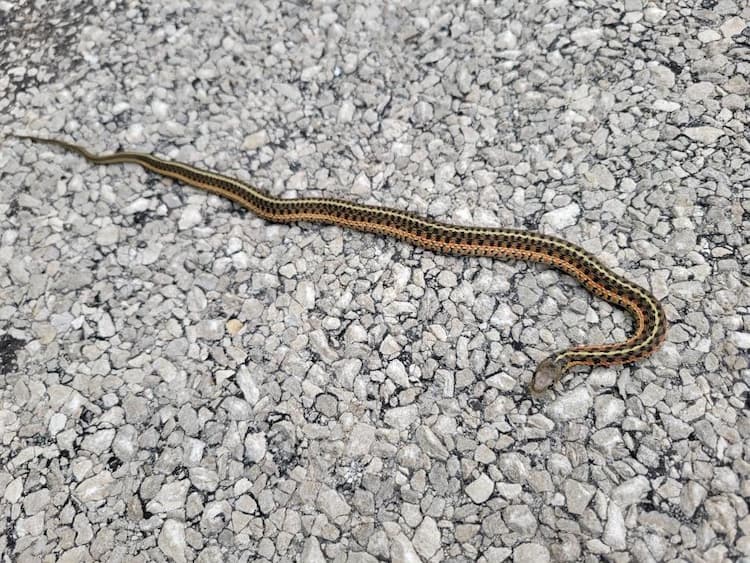
- The Eastern hognose snake, also known as the puff adder, is found statewide in Illinois. They get their name from their characteristic upturned snout. This snake finds its way onto our non-venomous list on a technicality – it has a very mild venom which can cause a local reaction in people but is otherwise of minimal concern. They are also unlikely to strike a person, preferring instead to feign death when faced with a predator. Hognose snakes diet consists mainly of toads, frogs, and salamanders.
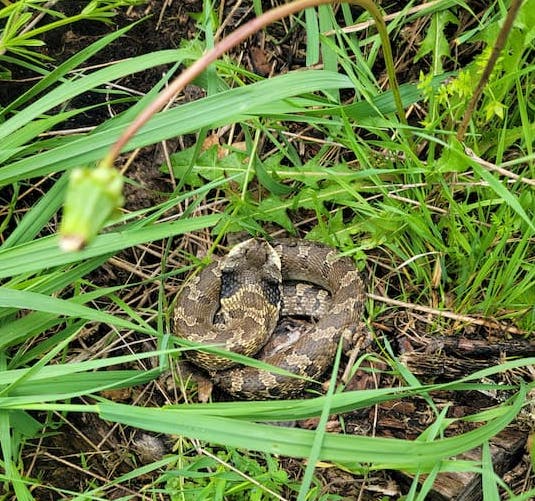
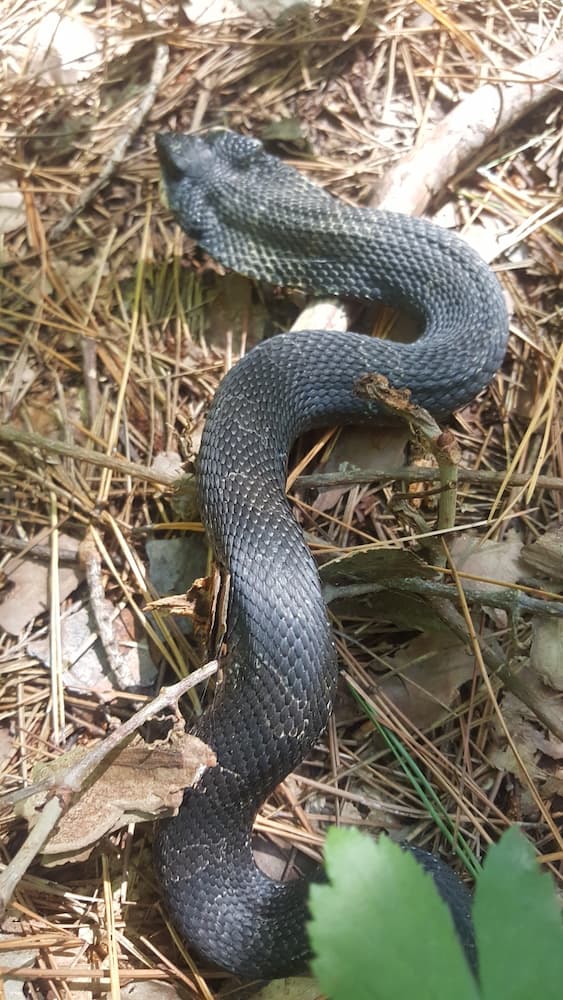
- Water moccasin can generally refer to any of seven species of water snakes found in Illinois. Most (six, to be exact) are non-venomous species, and only get a bad rap due to the notorious cottonmouth, which is venomous. Other species of water snake found in Illinois include the common watersnake, plain-bellied watersnake, southern watersnake, queensnake, diamond-backed watersnake, and Graham’s crayfish snake. All water snakes are known to be quite feisty and quick to defend themselves by striking out and releasing a malodorous musk from glands near the tail.
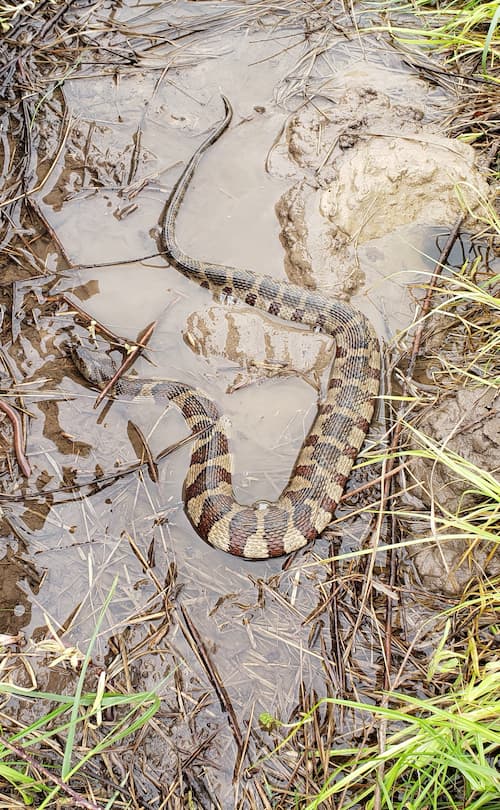
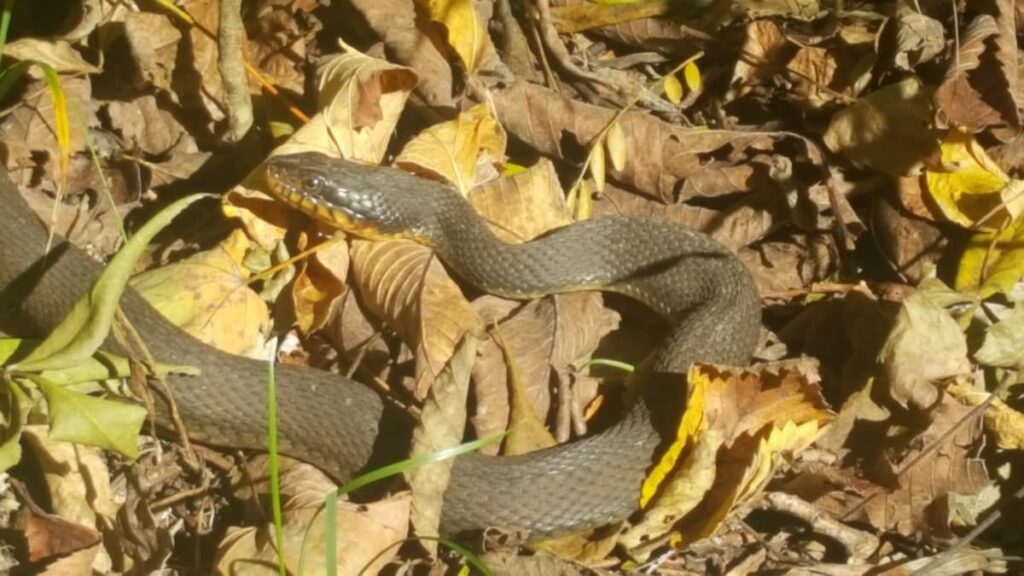
One of the more interesting facts about snakes in Illinois specifically is the Snake Migration also known as Snake Road. Located in Shawnee National Forest, LaRue Road is the only road in the world that closes from March 15th to May 15th and September 1st to October 30th in order to protect migrating snake species. During the spring, snakes and other native reptiles migrate from the forest preserves limestone bluffs to LaRue Swamp and are revered during the winter. The forest preserve first closed the road in 1972 in order to protect migrating reptiles from being hit by cars.
Those who volunteer in the Wildlife Medical Clinic know how dangerous it is for reptiles to migrate across busy roads! We hope learning more about these distinctive species will help everyone recognize the value of these snakes in our natural world and dissuade a person from causing a snake unnecessary harm. We appreciate the many ways these animals support the ecosystem and do our best to support any snake that comes in for our care!
Written by Maura Ryan, class of 2024.

